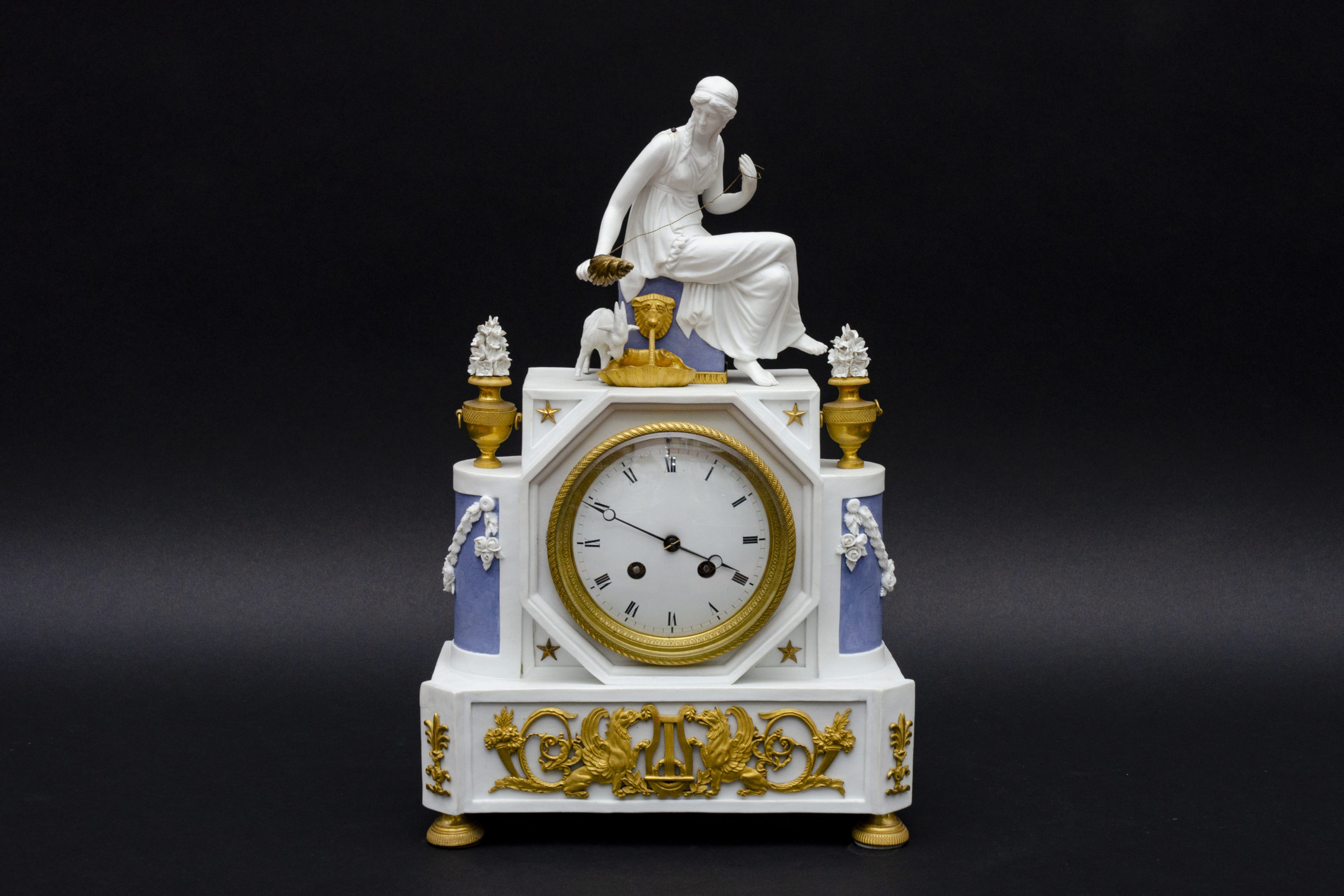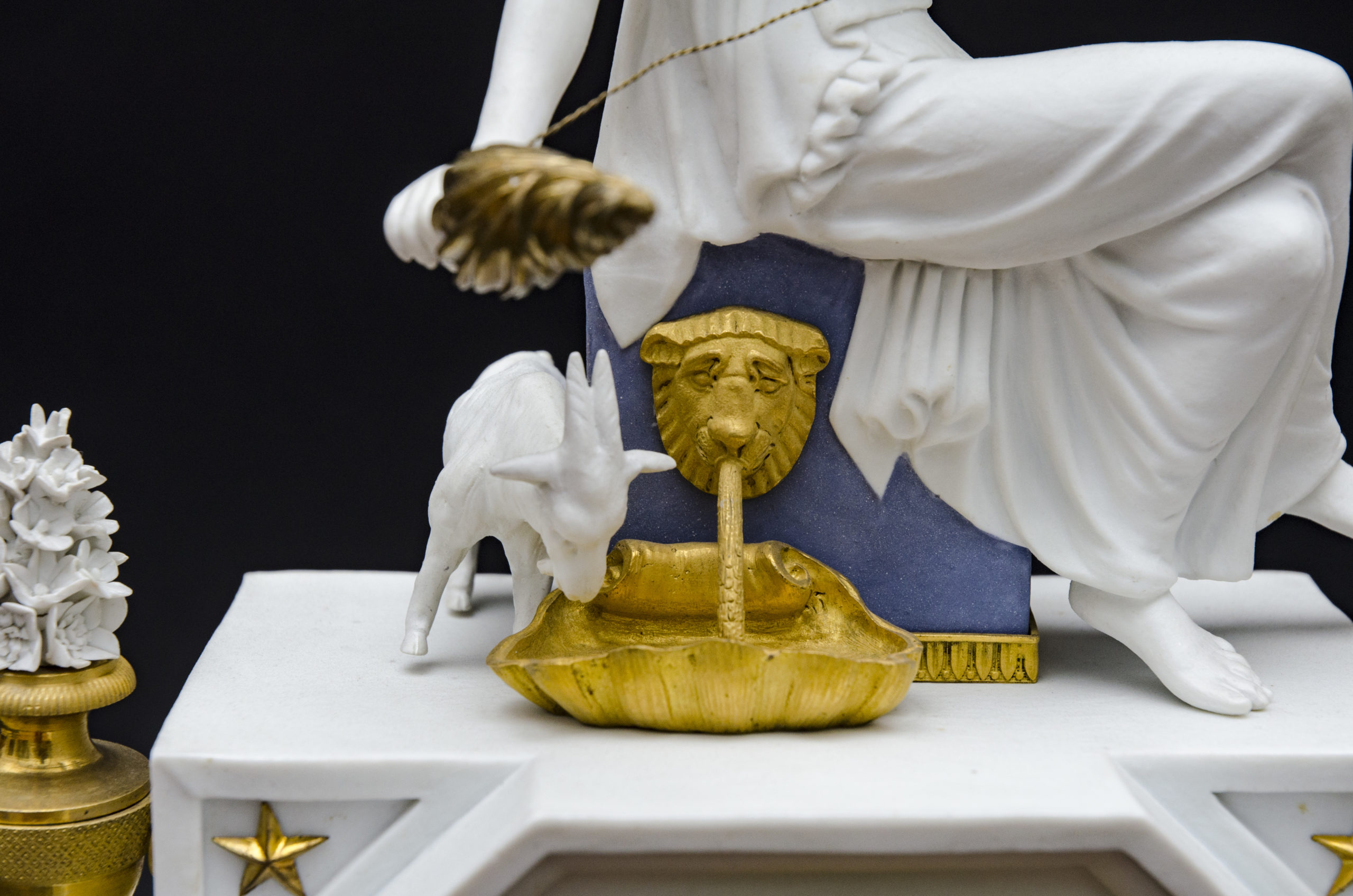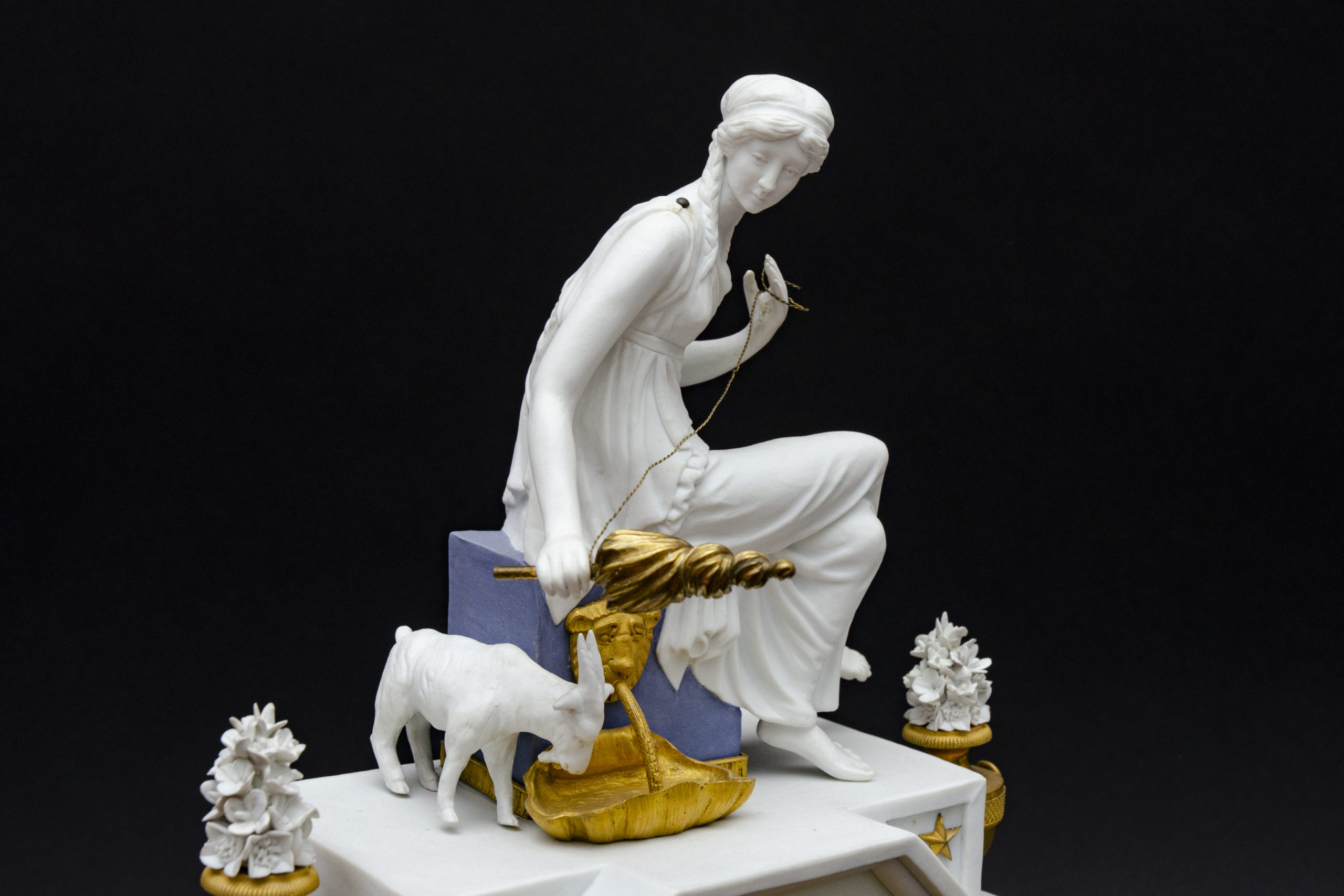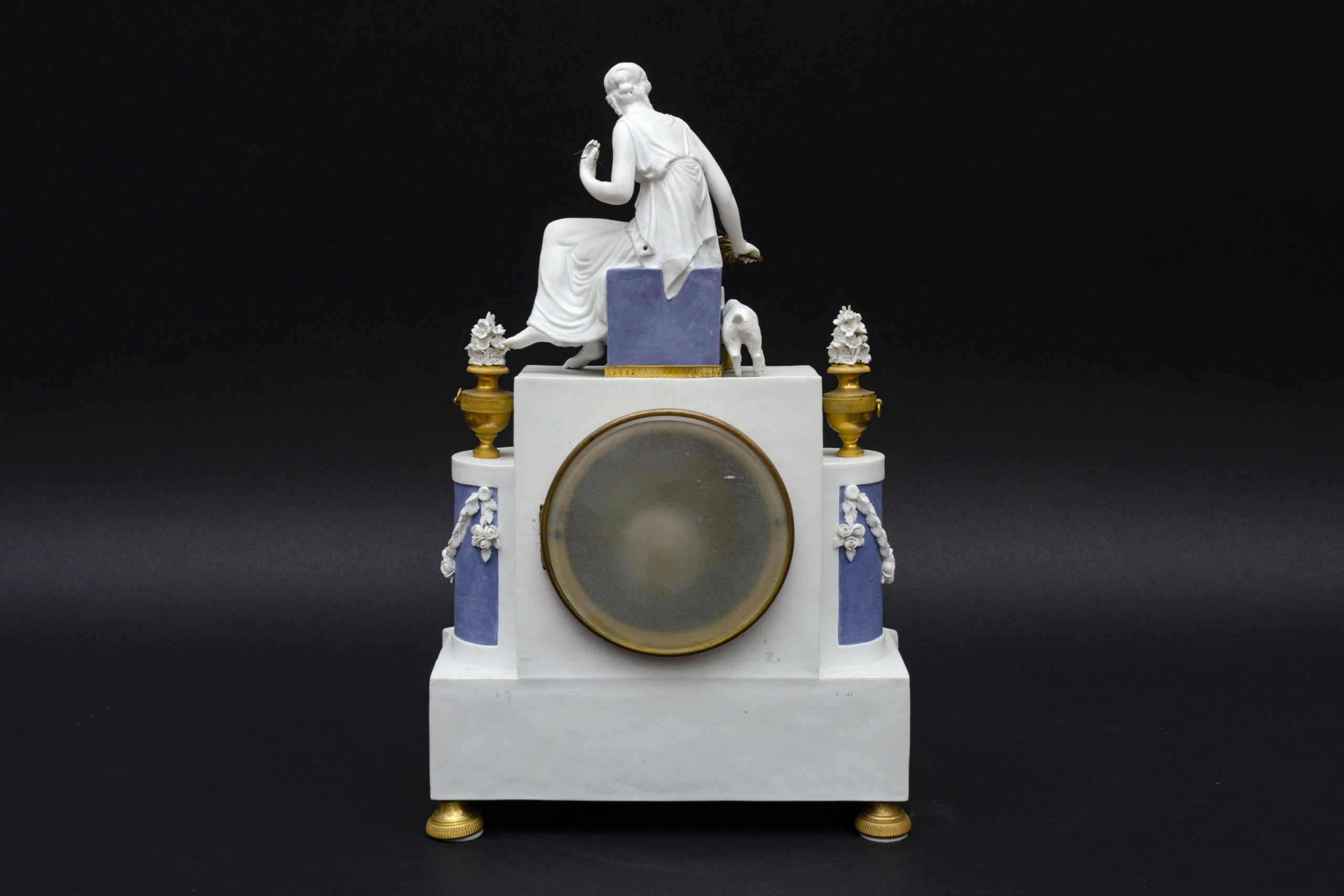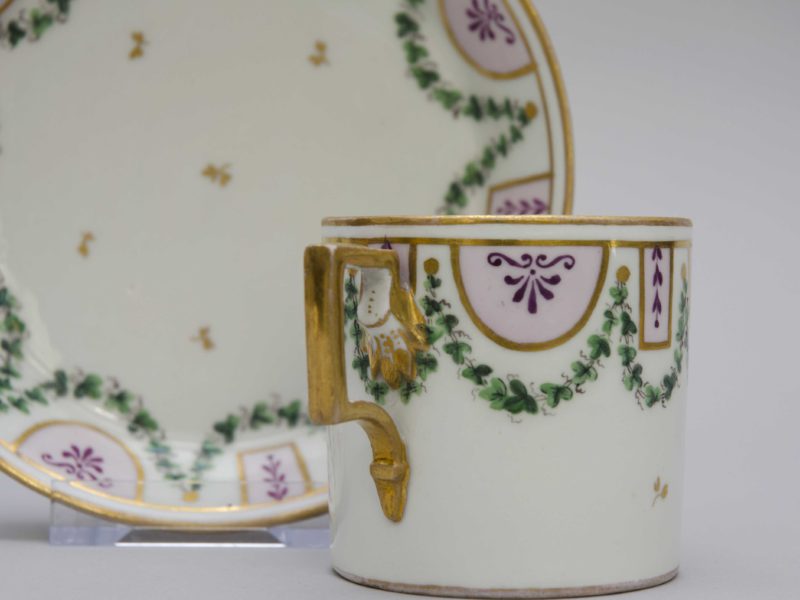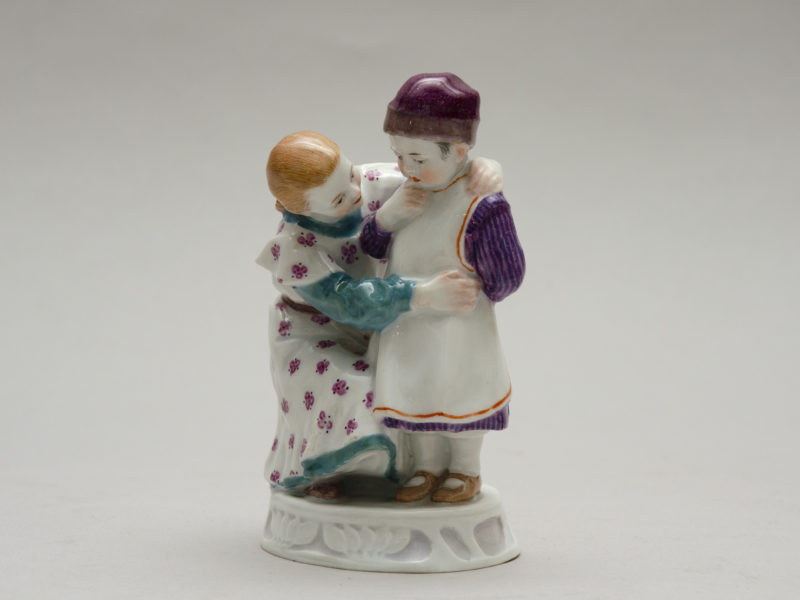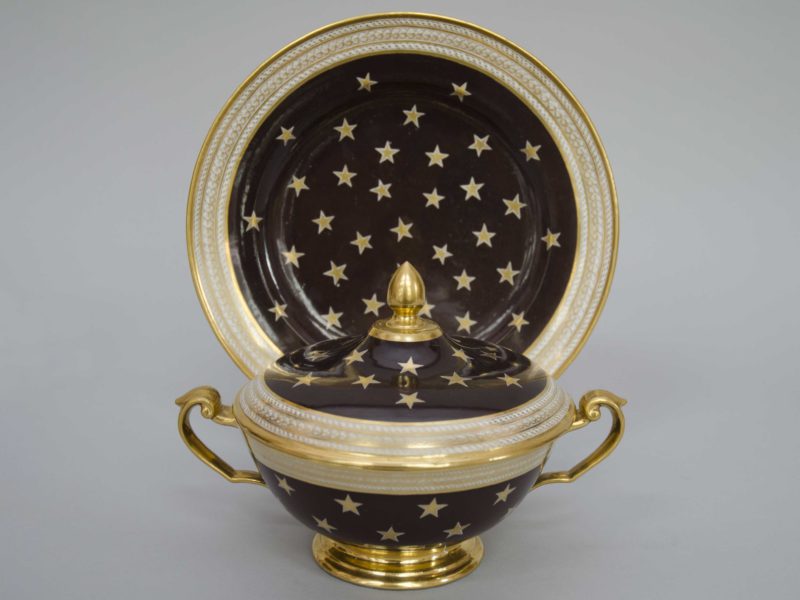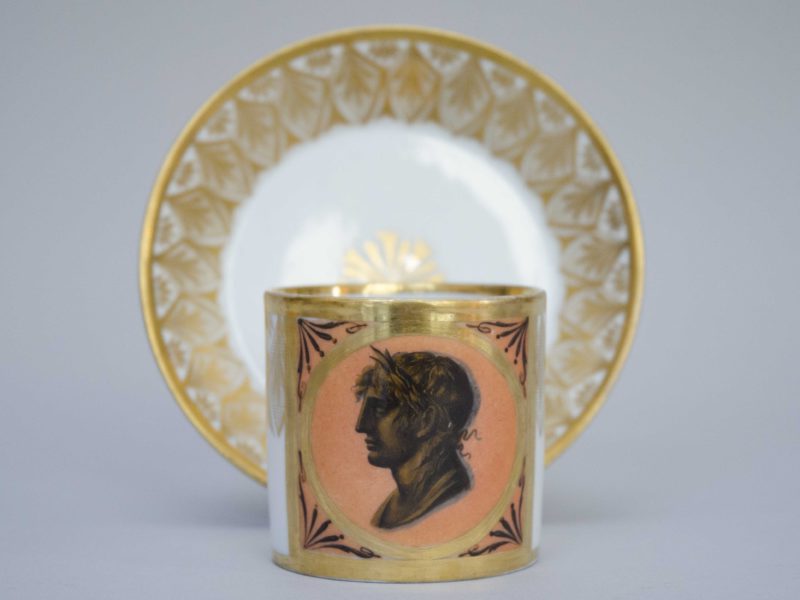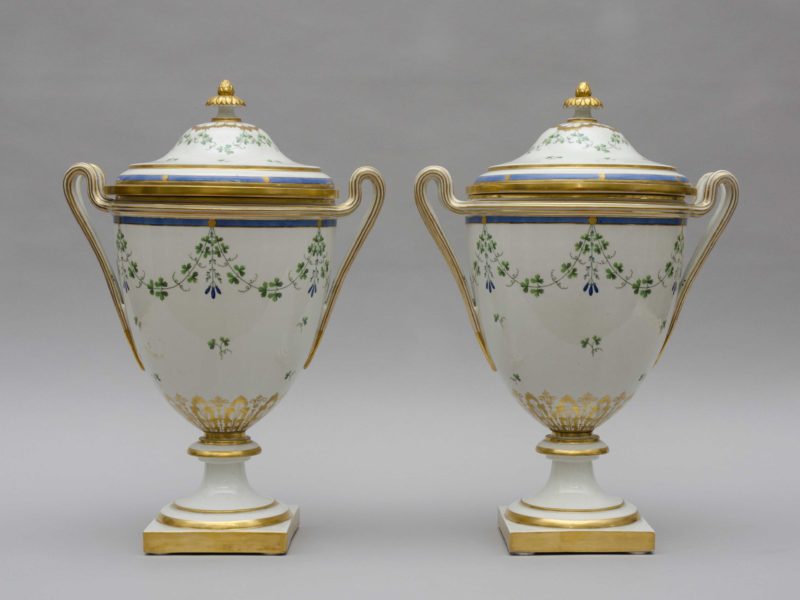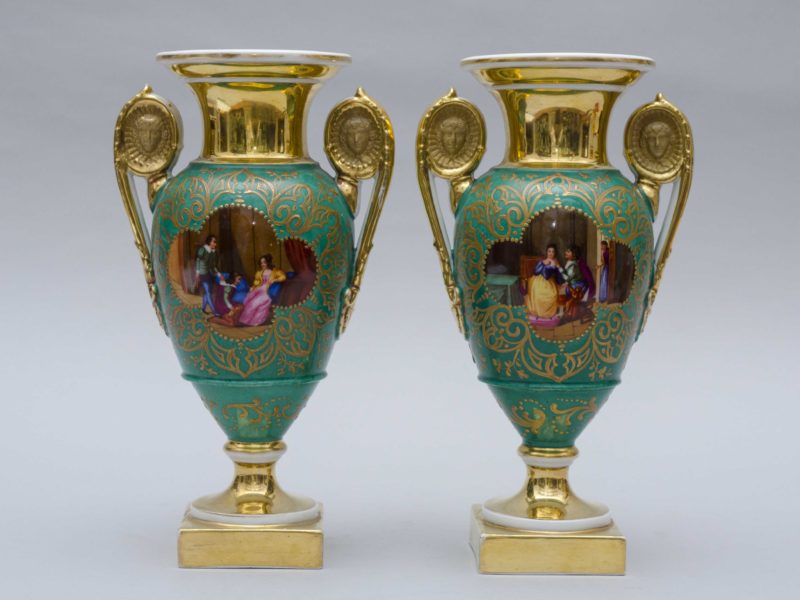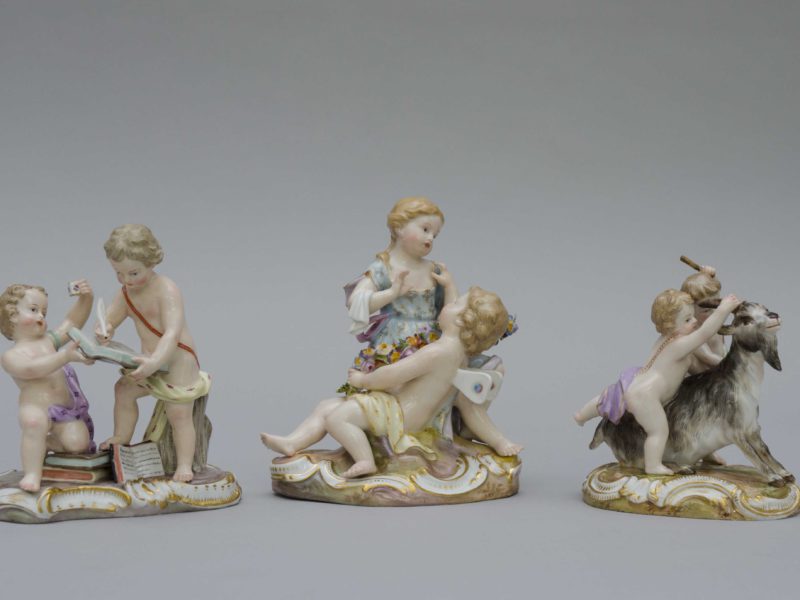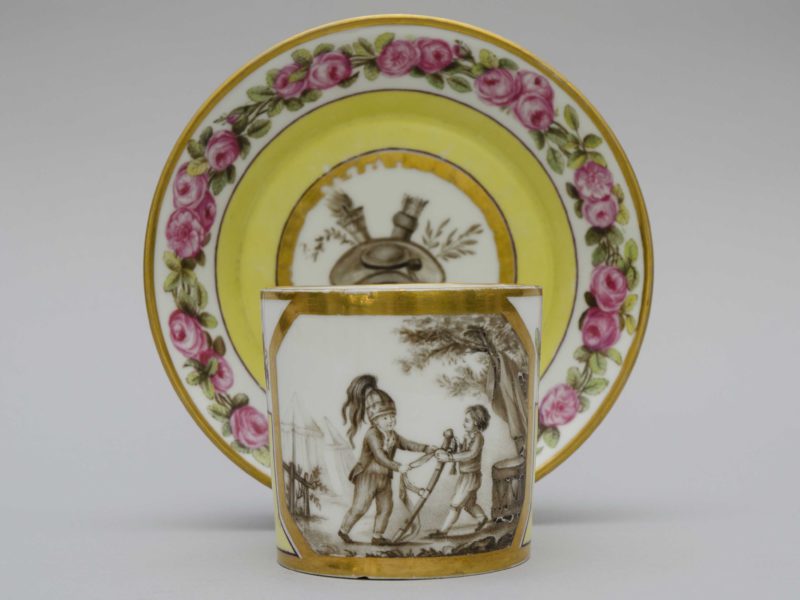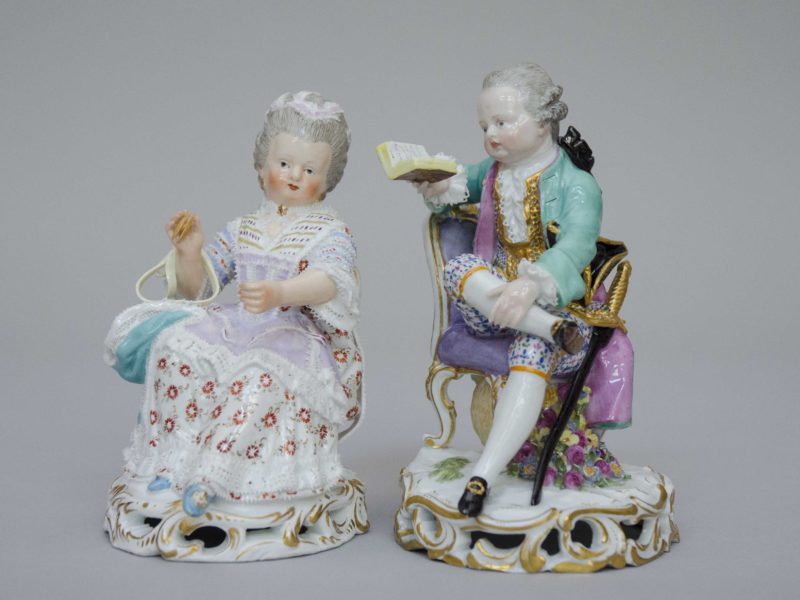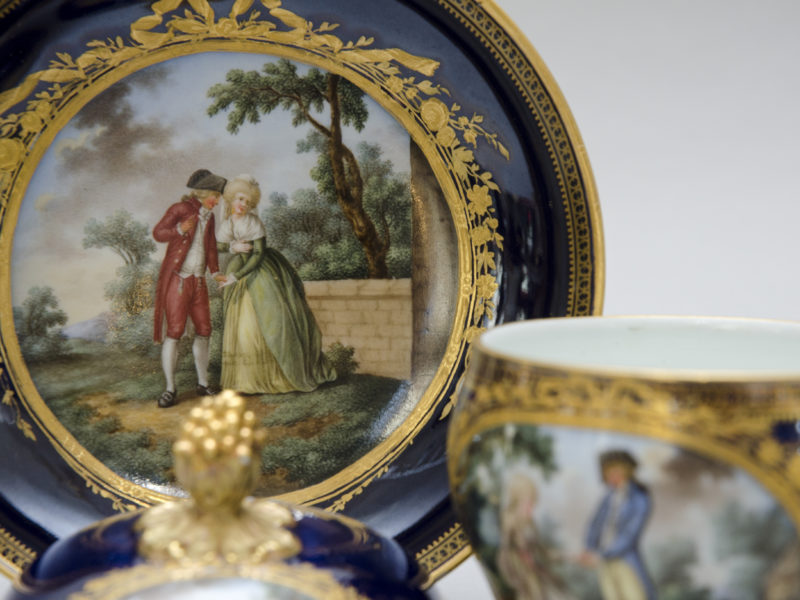
“The spinner” bisque Clock
Out of stock
A rare white and bleu bisque “borne” clock depicting a sitting spinner on top. The large white enamle dial and the refined gilded bronze decoration.
Size: H 40cm x W 26cm.
Paris, manufactory of Nast, circa 1800, French Consultat period.
Lit: A bronze variant of this clock is part of the collections of the french “Mobilier national” and is exhibited in “l’Hôtel Matignon”. Another comparable model is in the museum of Sèvres and the Norfolk Time Museum.
Illustrated in the book “Les biscuits de porcelaine de Paris 18e-19e siècle”, Régine de Plinval de Guillebon, Faton edition, p200.
Lit: Jean Nepomuceno Hermann Nast was born in 1754 in Austria. Arrived in Paris at the age of 20, he was hired by the Vincennes manufactory in 1780 and learned the craft of porcelain. In 1783, he took over the small pottery of rue de Popincourt (founded by Lemaire in 1780). Designer, turner, moulder, burner and decorator, Nast knew how to do everything! In 1787 he moved his establishment rue des Amandiers (currently No. 70 Rue du Chemin Vert). Nast enjoys famousness deserved by his talent. Always striving to improve the quality of his works, the decorations are neat, the golds are of high quality and the bisque are very white and even white on blue in the imitation of Wedgwood at the end of the 18th century. When his wife died in 1811, he involved his sons, Henri and François, to his work. When he died in 1817, he left a prosperous factory to his sons. In 1819, the Nast manufactory won a gold medal for large vases (1,5m!) decorated with bas-relief, a clock and bisque columns. The same happened in 1823, 1827 and 1834. After 50 years of existence, the factory will be dissolved in 1835.
Out of stock
Contact us